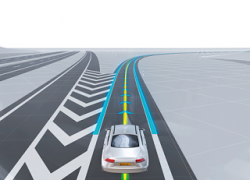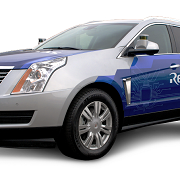Posts
Continental Pushes Autonomous Boundaries
/0 Comments/in Article, Industry, Technology, Technology CompanyBurney Simpson
Tier 1 auto technology firm Continental Corp. this month moved quietly but confidently to strengthen its leading position in the global development of autonomous driving.
Continental participated in the recent driverless demo in Virginia that received international press coverage, driving its own Chrysler 300c right behind the Cadillac SRX that Virginia Tech Transportation Institute researchers took for a spin near Washington, D.C. (See “Virginia Seeks Autonomous Research Lead,” October 20).
The black Chrysler’s autonomous technology included five radars and six cameras, along with Redundant Sensing and Actuation Architecture that doubles brake, steering, power and communication lines so the car can continue driving safely if there is any failure of the primary controls.
The camera system operates a forward-facing stereo camera, a surround view camera system that includes four 185-degree field of view fish-eye cameras, and a Driver Analyzer camera focusing on the driver.
Ibro Muharemovic, Continental’s head of advanced engineering NAFTA, noted that Continental had already tested an early-driverless vehicle for about 55,000 miles on U.S. roads in 2012. This precedes the highly publicized cross-country drive that Continental rival tier 1 supplier Delphi took this spring.
Continental is currently testing its autonomous vehicles in a number of states, and “when other states make their roads available, we will go there,’ said Muharemovic.
Also this month, Hanover, Germany-based Continental launched its Holistic Connectivity demo vehicle at the ITS World Congress in Bordeuax, France. Drivers can use the Human-Machine Interface in the car’s console to obtain by voice or visual interaction the vehicle diagnostic data along with traffic information. Drivers can also make commands to their home systems, allowing for the control of temperature and lighting.
In addition, Continental announced that Augmented Reality (AR) Creator software developr Elektrobit Automotive would operate as a standalone company. Continental purchased Elektrobit in July. AR Creator offers visualized lane positioning, navigation data, environmental modeling, and other autonomous-related capabilities.
Renesas Launches Autonomous-Driving Platform for Developers
/0 Comments/in Article, Impact, Industry, Technology, Technology CompanyBurney Simpson
A fleet of cars using a new comprehensive platform for creating, building and testing autonomous driving technology is now available for viewing and test drives at the Renesas DevCon 2015, the conference organized by Renesas Electronics America.
The autos feature eight LiDAR, five radar, forward smart cameras, a Vehicle to Everything (V2X) box, and other technology that is becoming a core part of autonomous vehicles worldwide.
Renesas’ Autonomous Driving Development Platform includes a fleet of cars that can be operated as a modular and open laboratory for the auto industry. Renesas collaborated on the project with autonomous technology firms Harbrick, NewFoundry, Arada Systems, eTrans Systems, and Cogent Embedded.
Renesas DevCon began yesterday and runs through Thursday at the Hyatt Regency Orange County in Anaheim, Calif.
“Advanced automotive systems for cars are complex to develop and carry a heavy burden of responsibility,” said Amrit Vivekanand, vice president of the automotive business unit at Renesas. “We are building vehicle-level platforms that address customer and partner engineering challenges.”
The platform can be used as a “working sandbox in real-world environments” by “algorithm experts, sensor makers, system integrators, and other subject matter experts” so they can “collaborate, validate, experiment” and benchmark new ideas, Renesas announced.
Vehicles using the new platform integrate such autonomous driving technology as sensor fusion, forward camera image recognition, 3D surround view, and V2X communications. It is powered by Renesas microcontrollers, System on Chips (SoC), and semiconductors.
The platform uses Harbrick’s PolySync system, a development system that uses two Renesas R-Car H2 SOCs. Cogent Embedded provided 3D surround view and forward lane detection systems. Arada and eTrans provided Vehicle-to-Vehicle (V2V) and Vehicle-to-Infrastructure (V2I) systems that run on two channels of 5.9 GHz dedicated short-range communications (DSRC).
Renesas reported it plans to expand the technology to offer cockpit, safety, security, and powertrain platforms.


